|

Darbhanga Raj
Mithila Casts
Vidyapati
Maithili
Language
ř Maithil Brahmans are the highest
ranking caste and also, in political terms, the dominant caste.
Because the Maharaja of Darbhanga was a Maithil Brahman, other
Brahmans came to control much of the land; thousands of villages
were in Brahman control, and they are still the largest landowners
in Mithila.
ř
Three Grades of Brahmans
The Maithil Brahmans are stratified in three levels. If you ask why,
you will be told The Myth of the King’s Feast . It is impossible to
verify the historical accuracy of this myth of origin, but the three
categories are real enough, and they are spatially distributed in
the Mithila region:
- Jaibar, being the vast majority, are found everywhere throughout the
region.
- Yogya are mostly consolidated in villages around Madhubani.
-
Srotriyas are mostly consolidated in 36 villages slightly northeast of
Darbhanga.
ř
The Myth of the King’s Feast
Once a great king decided to judge the worth of the Brahmans in his
kingdom to determine who were the most superior Brahmans. He sent
out an invitation to every one of them inviting them to his feast.
There was great excitement. On the day of the feast, one large group
of Brahmans got up early, took their baths, and headed directly to
the palace, arriving in the morning. These Brahmans were the most
unworthy of the Brahmans; they became the Jaibar Brahmans. A smaller
group of Brahmans took their bath, chanted the Gayatri Mantra 108
times, and arrived in the afternoon. These better Brahmans became
the Yogya Brahmans. There were thirteen superior Brahmans who
refused to forego all their daily rites even for the king. They got
up early as always, took their baths, chanted the Gayatri Mantra 108
times, and did not arrive at the palace until evening. These
thirteen superior Brahmans became the Srotriyas.
ř Look at the genealogical system of Brahmins.
The "Seed Man" and the Patrilineage
Every major patrilineage, called mul by Maithil Brahmans, was
founded by an "apical ancestor," the viji purusha, in the thirteenth
century. These founding ancestors were settled in a particular
village, which generally was the name given to the mul. In some
cases the viji purusha founded more than one mul if his sons and
grandsons at a critical juncture had resettled in a different
village, as Brahmans sometimes did, when given land-gifts or called
to a village as purohit to a major landowner. The association of a
mul with a village, however, was critical.
The word mul literally means "roots of a tree." Roots are founded in
the earth; territoriality is implicit in the very concept. The viji
purusha, or the "seed man" who founded the mul, is a kind of eternal
father of an eternal lineage, housed more or less permanently in a
village.
The question is, is there an eternal mother?
The King and the Genealogies of Maithil Brahmans
In 1310, Raja Harisingh Deva ordered the creation of written
genealogies for all the superior castes of the kingdom. This event
was known as panji prabandha, the founding of the panji
(genealogical) system.
Genealogists went to all the principal castes to write down each
family’s ancestors for the last six generations. These were the
relatives who had to be remembered in order to avoid incest. There
were other reasons, as well: All the descendants from a common
ancestor had to observe certain ritual restrictions, such as death
tabus.
The "apical ancestor," or the founding ancestor, of each family was
called the viji purusha, or "seed man" of the lineage. The lineage
itself was known as the mul.
Eight generations later , one of the descendants of Gangadhar Jha,
whose name was Mahesh Thakur, became an important official under the
Mughals. Mahesh Thakur was responsible for collecting revenues for a
vast territory for forwarding to Akbar; a percentage of this fund he
could keep for his own reward. He was thus on the way toward
founding a new dynasty. At this point he and the Brahmans initiated
a reorganization of the muls.
As a part of this reorganization, a caste-wide re-evaluation of the
quality of all the branches which had emerged in the previous eight
generations was undertaken by the genealogists. It was made
effective as of the 12th generation. Each newly re-evaluated branch
was called a gram, meaning "local branch" (literally, "village").
The newly identified sublineages were called mulgrams, and ranked as
Srotriya, Yogya, or Bans (a "good family"). Unsurprisingly, the
family of Mahesh Thakur, whose mulgram was called Kharoraya Bhaur,
became Srotriyas. This became the royal line of Darbhanga Raj.
In the case of the descendants of Gangadhar Jha, three main muls
were distinguished and Kharoraya was subdivided into 36 mulgrams of
varying ranks.
By mid-twentieth century, the 24th generation of Maithil Brahmans
had been born. The last maharaja, Kameshwar Singh, died in 1962. By
that year the government of independent India had abolished princely
titles throughout the country. The loss of political power has
resulted in serious decline in influence of the patrilineages. |
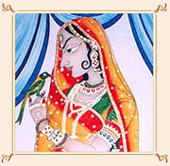
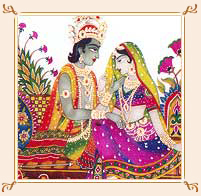
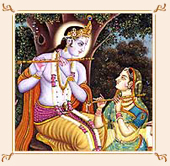
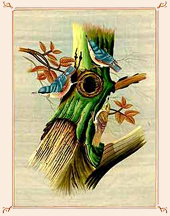
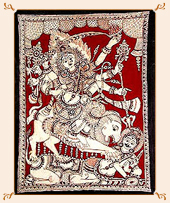
|


|
